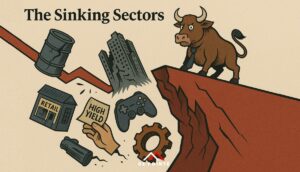Article

In the ever-evolving landscape of the UK property market, the Halifax House Price Index for November 2023 has unveiled intriguing insights. While the month-on-month increase of 0.5% marks a slight deceleration from October’s robust 1.2%, the market’s continued recovery is undeniable. Let’s delve into the details and explore the potential impacts on the alternative investment sector.
November’s Numbers: A Snapshot
The Halifax House Price Index reveals that, compared to the same time last year, house prices in November witnessed a 1% decline, a notable improvement from the 3.1% year-on-year drop recorded in October. The average UK home price now stands at £283,615, reflecting a £1,300 increase from the previous month.
Regional Dynamics of the UK Property Market
Regionally, the property market the South-east of England faces the most significant downward pressure, experiencing a 5.7% decrease in house prices over the last year. London follows closely with a 3.8% annual decline. In contrast, Wales emerges as a bright spot, recording one of the lowest annual falls at 1.5% compared to November last year.
Property Market Activity and Mortgage Trends
October’s UK home sales saw a 21% decline compared to the same period the previous year, with a 3% drop from September 2023. However, Bank of England figures present a more optimistic view, indicating an 8.5% increase in mortgage approvals for house purchases in October, totalling 47,383. Nevertheless, this still represents a 17.1% year-on-year decrease in mortgage approvals.
Insights from Halifax Mortgages
Kim Kinnaird, Director at Halifax Mortgages, offers valuable insights into the market dynamics. Despite wider economic challenges, property prices have demonstrated resilience, experiencing only a modest 1.0% annual decrease and remaining £40,000 above pre-pandemic levels.
Kinnaird attributes this resilience to a shortage of available properties rather than a significant surge in buyer demand. The recent uptick in mortgage approvals suggests a subtle increase in activity levels, potentially influenced by improving affordability for homebuyers. As mortgage rates ease slightly, buyer confidence may be on the rise, encouraging individuals to move forward with their home purchases.

Alternative Investments in the Wake of Property Market Price Shifts
The fluctuations in the housing market inevitably prompt a closer look at the alternative investment sector. While the property market has historically been a cornerstone of diverse investment portfolios, its recent trends may influence the choices investors make.
The gradual recovery of house prices, albeit modest, may instil confidence in real estate as a stable and resilient investment option. Investors seeking tangible assets with potential long-term growth might find renewed interest in property, particularly as the market shows signs of stability. Although it should be noted that property is not the only tangible alternative investment on offer for investors seeking stability and significant potential returns, some investors have found favour with the Art Market, where they discovered that investment-grade art offers investors a stable inflation hedge and a store of wealth that is uncorrelated from economic factors such as recession or inflation.
However, the regional variations in house price movements highlight the importance of a nuanced approach to alternative investments. Diversification across various asset classes, such as stocks, bonds, and emerging industries, remains a prudent strategy to mitigate risks associated with localised market dynamics.
The Halifax House Price Index for November paints a nuanced picture of the UK property market. While the modest increase in house prices signifies a continued recovery, regional variations and fluctuations in market activity warrant a careful assessment for investors.
For those eyeing alternative investments, the resilience of the property market amid economic headwinds may spark interest. However, a balanced and diversified investment strategy remains paramount, ensuring that portfolios are well-positioned to navigate the evolving landscape and capitalize on emerging opportunities. As the property market continues to unfold, investors are advised to stay informed and adapt their investment strategies accordingly.






